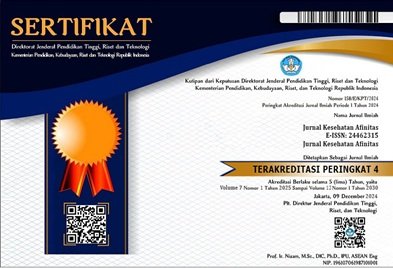APLIKASI TEORI KEPERAWATAN JEAN WATSON PADA ANAK DENGAN ENCEPHALITIS STATUS EPILEPTIKUS YANG TERPASANG VENTILASI MEKANIK DENGAN GANGGUAN CAIRAN DAN ELEKTROLIT DI RUANG PICU RSUD TARAKAN
Kata Kunci:
Brand Image, Commitment, Trust, RSGMP UnjaniAbstrak
The purpose of writing this paper is to understand the basic concepts of encephalitis, understand the concept of nursing care for encephalitis using Jean Watson's theoretical approach and improve nurses' abilities in applying nursing care to clients with encephalitis using Jean Watson's theoretical approach. The method used in this research is a case study method where researchers carry out in-depth observations and analysis of a small number of subjects to understand certain phenomena, interventions, or nursing processes in detail. Case studies allow researchers to gain in-depth insight into individual experiences and the results of implemented interventions. In this case discussion, we will discuss the coherence between theory and the case report of nursing care for fluid and electrolyte imbalance in An. T and An. R with encephalitis on ventilator which was carried out from April 4 – June 6 2024 at Tarakan Hospital, Jakarta. Activities carried out include assessment, establishing a nursing diagnosis, implementing it, and carrying out nursing evaluations. The results of the assessment obtained from both patients showed that both patients felt the same symptoms. In patient 1 with a high risk of trauma, the patient had fever to seizures, weakness, lethargy. Meanwhile, in the second diagnosis of fluid and electrolyte disorders, it was found that patient R did not experience diarrhea while patient 2 An. R got diarrhea up to 5 times. The nursing diagnosis that emerged in both patients was the same. Namely a high risk of trauma related to generalized seizures and fluid and electrolyte disorders related to hypovolemia. The nursing plan is prepared based on the nursing diagnosis found in the case. The nursing plan consists of Nursing Interventions Classification (NIC) and Nursing Outcomes Classification (NOC).





